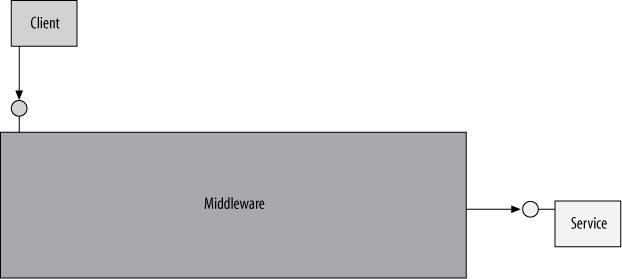Cloud as Interceptor
The service bus was initially developed to address the acute connectivity issues of calls across the Web. However, it has the potential for much more. Compare Figure 11-2 to Figure 1-19 describing the WCF architecture. In both cases, the client does not interact directly with the service; instead, the calls are intercepted by a middleware. In the case of regular WCF, the middleware is the proxy and the interpretation chain leading to the service, as shown in Figure 11-10.

Figure 11-10. Intercepting regular WCF calls
In the case of the service bus, the middleware comprises WCF on both sides and the service bus itself, as shown in Figure 11-11.

Figure 11-11. The cloud as interceptor
From an architecture standpoint, it is the same design—intercept the calls to provide additional value. In the current release of the service bus, that additional value is the capability to install buffers. Future releases of the service bus will add queues and routers and, likely further down the road, logging and various instrumentation. In fact, I believe the service bus has great potential for powerful interceptors and, no doubt, additional aspects will become available over time.
Get Programming WCF Services, 3rd Edition now with the O’Reilly learning platform.
O’Reilly members experience books, live events, courses curated by job role, and more from O’Reilly and nearly 200 top publishers.

